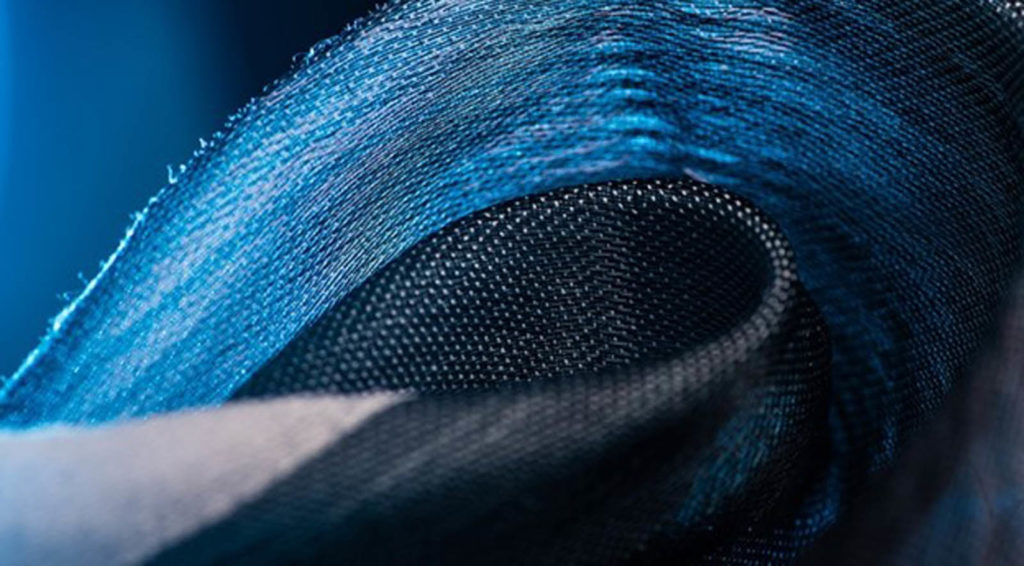IPC E-Textiles Summit covers innovations, markets and business advice.
by Janet Preus
A large group of presenters and attendees participated in IPC’s two-day conference on e-textiles recently, sharing insights about new technologies, the business of e-textiles, markets and trends. The textile industry, generally, has been quick to respond to industry needs throughout the course of the pandemic, manufacturing more masks and other PPE, as well as launching anti-viral treatments for fabrics and other products that support efforts to fight the virus.
Meanwhile, new technologies and applications in e-textiles continue to be developed and show the promise of expanding growth.

In fact, one presenter says that “the wearables market is exploding” right now. Brian Farrell, president and CEO of wearable technology company Human Systems Integration Inc. (HSI) believes there are many opportunities with government agencies to develop better e-textile wearable solutions. Furthermore, “SBIR [the U.S. Military’s Small Business Innovation Research] funding carries lucrative technology and product rights and ownership.”
Farrell said that ergonomics, including cable management, continues to be a significant challenge for current and emerging wearable systems. His presentation noted the different challenges in developing base layer wearables versus outer layer. In the past, cable management was the “Achilles heel” for wearables systems for the military, partly due to the need to integrate multiple modules, which are complex. The use of wearable technology increases the complexity of developing the system, and garment integration (base layers and outer layers), can also add to that complexity.
Prototyping
In her presentation, Madison Maxey, founder and CEO of LOOMIA Technologies Inc., broke down the process of creating a prototype. The company makes components used in e-textile applications, which are used in a variety of market areas.
Md. Tahmidul Islam Molla, a post-doctoral researcher at Cornell University, also discussed prototyping, focusing on the steps in the design and construction processes, but first asked the question, “Why do we need e-textiles?”
The answer, he said, is that clothing can provide both expanded functionality and better comfort than currently available body-worn technologies. There are challenges, but following a decision-making process that addresses variables provides a path to a successful prototype.
Manufacturing and marketing
Paul J. Wagner, chairman and CEO of Minnesota Wire, discussed international manufacturing challenges and current trends. Wagner said that mid-size companies “are moving in droves” from Asian countries, particularly China, and medical product manufacturing is “coming back to the U.S.” He cited supply chain interruptions, wage increases, trust erosion, tariffs, the theft of intellectual property, pollution concerns and tech challenges as concerns facing U.S. manufacturers in China.
The company designs, develops and manufactures wire, cable, and interconnect assemblies for a variety of markets, including for medical e-textile applications. He expects to see growth particularly in remote patient monitoring devices. These will become more important, he said, especially in rural areas that may not have ready access to in-person healthcare.
Clare King, president of Propel LLC, also addressed supply chain issues in an open discussion on PPE and other medical products used to combat COVID-19. She believes that everything in a product needs to be manufactured in the U.S. in order to have “true resilience and national security for healthcare.”
King presented with Carole Winterhalter, U.S. Army Natick Soldier Systems Center (NSSC), on the topic, “An Insider’s Guide to Doing Business with the Military,” which covered detailed steps in establishing and maintaining a productive business relationship, including understanding the intricacies of SBIR process.
King shared her “advice learned the hard way,” which included trying subcontracting first, learning how to write a compelling proposal and getting good advice about contracts She also cautioned participants to read the entire contract with care, and not assume that everything will be correct because it came from the government.
“Propel’s R and D business,” she said, “is focused on bridging between technology and textiles for military and first responder products.” However, she cautioned attendees to “sell forward your technology,” and to be prepared to find other customers.
The latest
Chuck Kinzel, who joined Liquid Wire™ three years ago, explained the company’s proprietary conductive gel. The company worked closely with Binghamton University’s Center for Advanced Microelectronics Manufacturing in developing the product that it has trademarked Metal Gel™.
Because the product is always in a liquid state, no curing is required, but it must be encapsulated. The gel can be printed on a variety of substrates, and it has shown “high functionality in textile structures,” Kinzel said.
Dr. Lauren Cantley, technical staff member in the Advanced Materials and Microsystems Group, Lincoln Laboratory, MIT, is currently working on developing fiber microsystems for a variety of applications, including soldier health monitoring, chemical agent detection, distributed sensing, and communications. Her presentation noted that “materials processing approaches are emerging that enable microelectronic device functionality at the length, scales and cost of optical fiber.”
The goal is to integrate functional fiber microsystems into commercial processes but maintain the textile’s original performance characteristics. But there are “distinct differences between traditional yarn and smart yarn performance parameters due to differences in the yarn properties,” she said.
Forthcoming
Information on additional sessions, the presenters and their research will be shared in this publication in the coming days. IPC will also hold an E-Textiles Europe Nov. 19–20. The virtual summit will provide technical education for innovators, technologists, materials suppliers and brands to learn about innovations, designs and manufacturing concepts for e-textiles technologies being developed in Europe, as well as to collaborate on solutions and identify partners.
The Advanced Textiles Conference, as part of IFAI Expo 2020, will hold virtual educational sessions and a variety of other activities Nov. 2–12. Several presentations will deal with e-textiles and other smart textile technologies and applications. Visit www.ifaiexpo/advancedtextiles for details and to register.
Janet Preus is senior editor of Advanced Textiles Source. She can be reached at jlpreus@ifai.com.
 TEXTILES.ORG
TEXTILES.ORG


